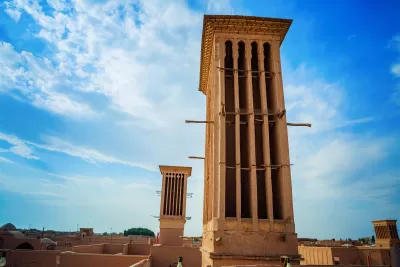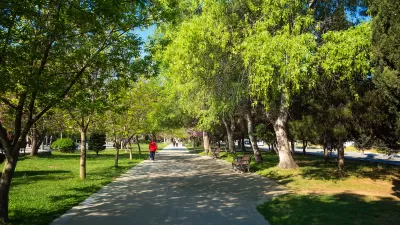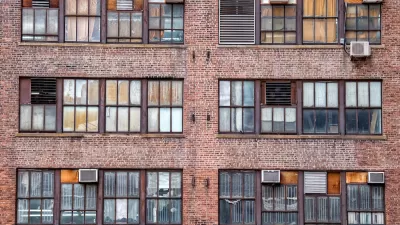Cooling mechanisms built into traditional architecture offer lessons for U.S. builders as heat waves grow more intense.

In an article in Time, Anna Gordon describes the centuries-old Middle Eastern architectural cooling techniques that could help U.S. households reduce their reliance on air conditioning, which “is believed to cause 1,950 million tons of CO2 emissions per year around the world, accounting for almost 4% of global carbon emissions.”
John Onyango, a professor at the University of Notre Dame School of Architecture, told Gordon, “Barajeels have passively cooled buildings for centuries. These wind towers can lower temperatures by up to 50 degrees Fahrenheit depending on how they are designed and the levels of wind.” These devices “work by funneling hot winds from outside to the lower floors of the building or even underground, where the air is cooled naturally. The cooled air is then released inside the building. So long as there is wind flowing, the barajeel works without ever requiring electricity.”
Other ways to improve air flow and cooling include chimney-like structures in tall buildings and high dome-shaped roofs. Gordon also points out the energy efficiency of many traditional Middle Eastern building materials. “Unlike the production process for steel or concrete, the production of stone and mud bricks does not lead to large amounts of carbon emissions.”
FULL STORY: The U.S. Should Ditch AC and Use Middle Eastern Techniques to Cool Its Cities

Alabama: Trump Terminates Settlements for Black Communities Harmed By Raw Sewage
Trump deemed the landmark civil rights agreement “illegal DEI and environmental justice policy.”

Planetizen Federal Action Tracker
A weekly monitor of how Trump’s orders and actions are impacting planners and planning in America.

Why Should We Subsidize Public Transportation?
Many public transit agencies face financial stress due to rising costs, declining fare revenue, and declining subsidies. Transit advocates must provide a strong business case for increasing public transit funding.

Understanding Road Diets
An explainer from Momentum highlights the advantages of reducing vehicle lanes in favor of more bike, transit, and pedestrian infrastructure.

New California Law Regulates Warehouse Pollution
A new law tightens building and emissions regulations for large distribution warehouses to mitigate air pollution and traffic in surrounding communities.

Phoenix Announces Opening Date for Light Rail Extension
The South Central extension will connect South Phoenix to downtown and other major hubs starting on June 7.
Urban Design for Planners 1: Software Tools
This six-course series explores essential urban design concepts using open source software and equips planners with the tools they need to participate fully in the urban design process.
Planning for Universal Design
Learn the tools for implementing Universal Design in planning regulations.
Caltrans
Smith Gee Studio
Institute for Housing and Urban Development Studies (IHS)
City of Grandview
Harvard GSD Executive Education
Toledo-Lucas County Plan Commissions
Salt Lake City
NYU Wagner Graduate School of Public Service





























